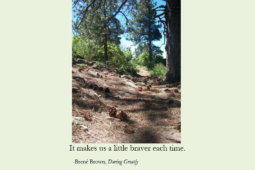When you work hard to accomplish something do you take the time to celebrate? Celebrating progress and success are an important part of goal setting, growth, and achieving what you set out to do. It can help with momentum and motivation. To learn how to celebrate your wins we can think of celebrations in two categories: intentional and spontaneous.
2 ways to celebrate your wins
In my experience, planning how to celebrate your wins can be a struggle. For some goals, I have found it easy to find rewards for that served as motivation for me to keep going. Other goals have been very difficult for me to decide on what kind of reward I should get. As I continue to learn how to set better goals, I am also working to understand how to celebrate better.
As I learn from my experiences, and from others that share their celebrations, I gain a better understanding of how to celebrate wins.
There are two main ways that you can celebrate your wins: 1) intentionally 2) spontaneously.
We have influence on these ways to celebrate. Of course, you could say there is a third way, recognition from others, but in this post I want to focus on the above two ways.
You intentionally do something to celebrate your achievement.
Intentionally doing something to celebrate your achievement means that we need to know what type and level of celebration our achievement warrants.
Two common types of rewards:
1) Social
For a social reward, you may want to consider if the celebration is something you want to share with others. If so, how many others? In what way would you like to involve other people in your celebration? It can be helpful to note that even if it’s a personal issue that you want to honor and give some public light too, how much of what you share and how you share it are up to you.
2) Tangible
A tangible, or purchased reward, can be related or unrelated to your goal.
Maybe you want to purchase something related to the goal that will further encourage progress on that goal or impact that area towards further growth. For example, you buy yourself a nice running jacket after completing your goal to run everyday before work for 30 minutes. Perhaps you started your running habit on the treadmill and now you’re ready to take it to the street. You can wear your reward when you run in the cold.
And unrelated reward would be treating yourself to a type of food you like or buying yourself something that isn’t related to your goal.
Be careful with a purchased reward though, especially when trying to relate it to a goal somehow. It can open you up to a missed celebration if you can’t figure out what that purchased reward should be. More on that below.
The important thing to remember is that rewards don’t have to be huge or tangible. They could be, especially at the end of a super difficult goal or behavior change. However, small and non-tangible rewards are good also. Pay attention to your body and seek out a clue for how to celebrate spontaneously.
You spontaneously do something to celebrate your achievement.
We can intentionally plan out how we will celebrate a specific goal, but it’s important to remember that celebrations don’t always have to be entirely intentional, or saved for our biggest goal or growth. When feel like you accomplished something, feel the energy of your body. Do a little dance by your desk, do some air punches, give yourself a yay.
There was an interview in the 5 Days to Your Best Year Ever course where one of the interviewees said that he celebrates by doing a few second little dance. It’s simple, but having your body feel the energy created by a little dance is a good reward.
Just the other day, I found myself celebrating a productive blog planning day by ending the day in the fitness center of the hotel. I had checked into a hotel for the weekend to remove distractions. My trip to the fitness center started off as me needing to get up and move since I had been in my room all day thinking and planning. However, the energy that I had from my focused work made that workout feel like a celebration!
Even after the workout was done and I was walking back to my room, I did a few celebratory air punches. It felt great! This is what a spontaneous celebration looks like. I didn’t let the hotel camera in the hallway stop me from celebrating (that in itself is something for me to celebrate)
Figure out how to celebrate your wins
Identifying the “right reward” is something that I have been struggling with since I started setting goals. It’s difficult because I mostly see rewards as something that I need to buy for myself. However, when I’m focused on that tangible reward, it becomes a game of trying to find the perfect reward of each goal. When I’ve played that game, I might think of things that serve as a reward, but then later decide that it isn’t related enough to what I want to celebrate. As a result, I’ve not followed through with celebrations.
I have also set goals and said, “I’ll think of a reward for achieving that goal later” and then never filled in a reward.
Therefore, while I will be working really hard to identify intentional ways to celebrate each of my goals this year, I am also learning to use what comes up in life as rewards.
I hope this helps you as you are trying to figure out how to celebrate your wins. Keep in mind that there are intentional and spontaneous ways to celebrate and that you can have a mixture of social and tangible rewards.
Are there goals or achievements for this year that you haven’t yet celebrated?
Now is the time to celebrate. Even the small wins that might be the steps we are taking to get to that big goal.
Behavior Challenge: Think of a goal or achievement that hasn’t been celebrated yet (or needs another celebration). Do something to celebrate it right now. Even if that means doing a head bob dance while the person next to you wonders what’s so spectacular.





 One behavior change at a time.
One behavior change at a time.







Recent Comments